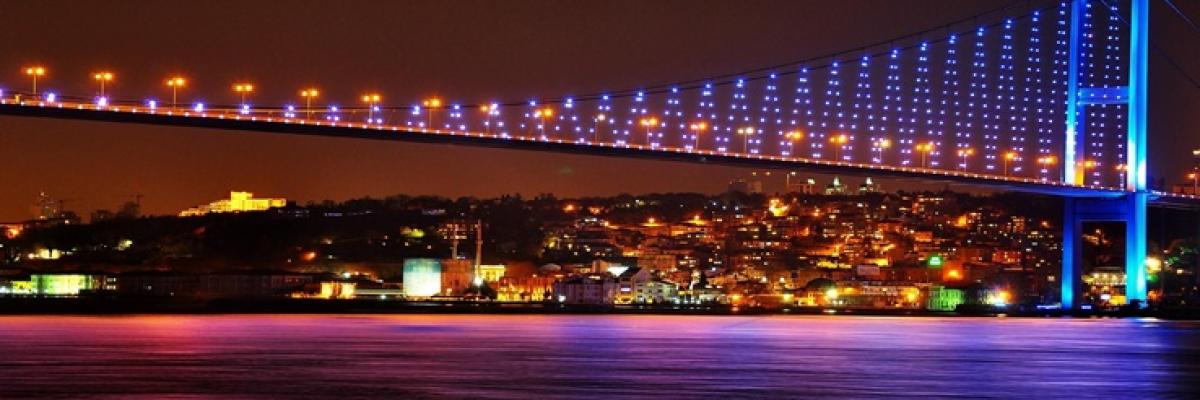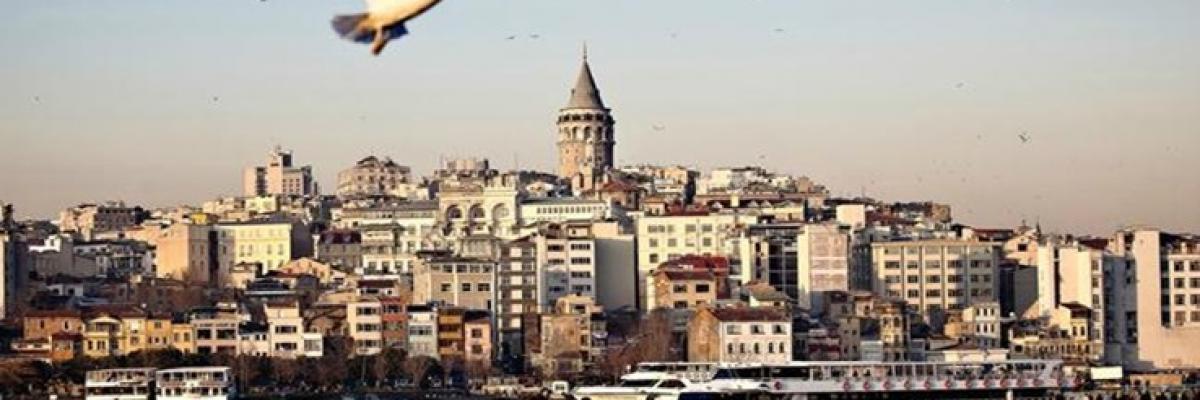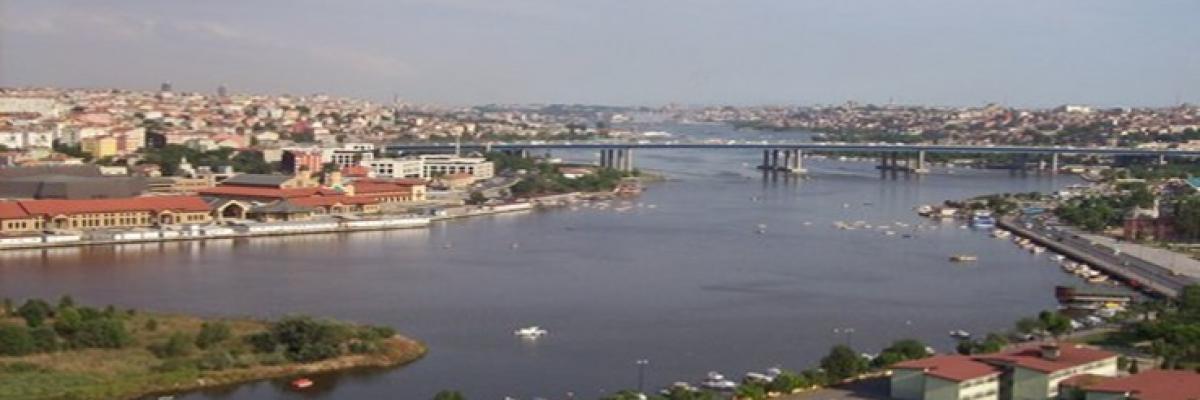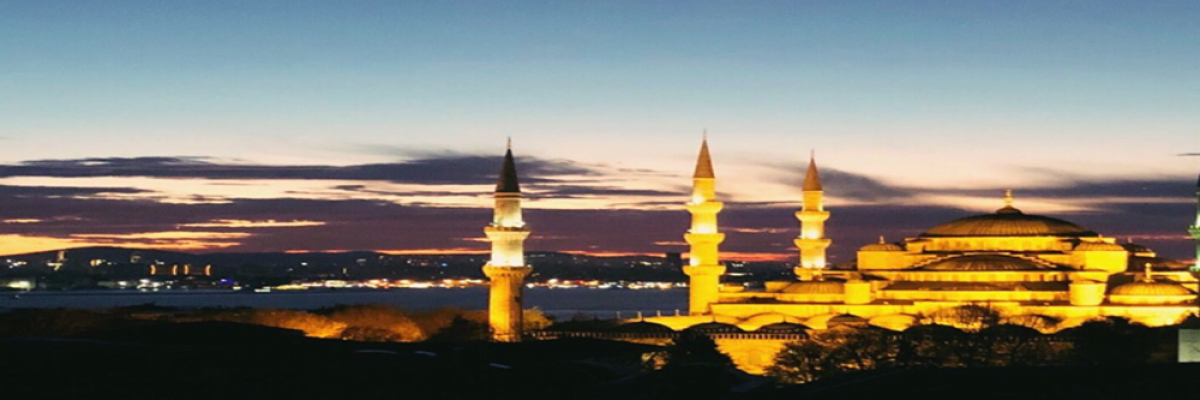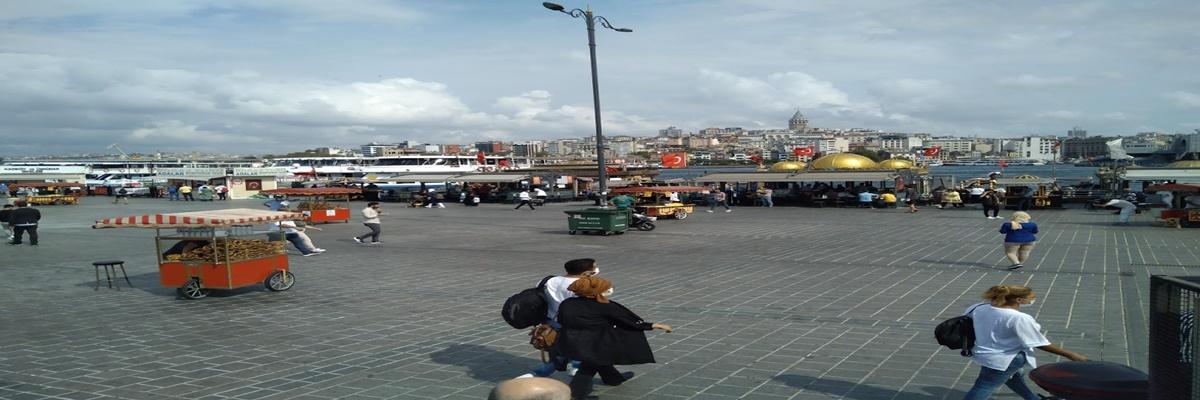Turkısh The Art Of Tile-Making
Posted on Paz Eyl, 20 by M.İlker AKIN


Turkish Tile Art and History
Turkish Tile Art and History: It is a cultural heritage of Anatolian civilization with its historical forms and subtleties. It is Turkish Tile Art that carries this heritage to our homes. Considered as its homeland, tile has a centuries-old history in Kütahya and İznik lands.
Tile, one of the traditional Turkish arts, is generally used in the decoration of architectural structures. Mosque, mansion. It is a patterned ceramic product used in interior and exterior decorations of palaces, fountains, tombs and similar structures. Kütahya and İznik Tiles are divided into two as types.
1- Wall tiles, this type of tiles, which the westerners call Tile-Art, our ancients called Kaşi.
2. This type of tile, called Evani, consists of plates, vases, mugs, bowls, jugs, glasses and similar ceramic products with tile patterns. We still call this type of Kütahya porcelain ceramics.
Turks have preferred to decorate their buildings with mosaic tiles and tile tiles since ancient times.
Especially in the period of the Karakhanids (955), who founded the first Muslim Turkish State to adopt Islam, it is very common. They started to decorate their shrines with mosaic handmade tiles and patterned tile motifs. The tradition of hand decoration tile tile decoration, which started to be seen in buildings belonging to the period, is frequently seen. This tradition shows that Turkish Tile Art has a history of over a thousand years.
This preference has become a tradition in the Great Seljuks and Anatolian Seljuks Period. It continued later in the Ottoman period. Seljuks used it as decoration in many architectural areas that they built in the places they dominated. If we need to briefly mention the characteristics of Seljuk tiles: we see that they are in square or rectangular, hexagonal shapes. We can see that one of their faces is painted and baked in colors mixed with glaze, such as blue, navy blue, ocher, turquoise, black, brown. We can say that they are ornaments made in the form of mosaics, which are applied on plaster or mortar. Kufi style texts and rumi motifs were added to this mosaic technique, which was developed over time. Turkish tile art, which developed in historical periods, reached its peak with Iznik and Kütahya tiles in the 16th century.
Archaeological excavations and researches were carried out in Kütahya, which was known as KOTIAEION in ancient times. As a result, it has been proved that ceramic production has been made in Kütahya since ancient times.
Transition to new techniques in Turkish tile art;
It has been possible by researching and applying new production techniques and possibilities that will meet the ever-increasing demand in a shorter time without taking back the art taste and competence.
Why Tile decoration in architecture?
• Architectural decoration, with the art of tile decoration and multicolored color, is a dimension of expression.
• Persistence: Tile tiles, fired in furnaces at a temperature of around 1050 ° C, have made the tile the most permanent element of decoration as decoration.
• Motifs and ornaments on Kütahya and Iznik Tiles gain a continuity extending to infinity as a pattern,
• Iznik tiles Tile plates absorb sound thanks to the distribution of raw materials such as quartz.
• Kütahya Tile Provides homogeneous distribution of sound waves thanks to its reflective feature in the glaze layer.
• Provides thermal insulation with the materials used in Kütahya and Iznik Tile Composition, keeps the places cool in summer and warm in winter and allows them to breathe.
• The shine in the tile and patterned ceramic glaze layer absorbs the light a little, causing the colors under the glaze to appear vivid and bright,
• The tile tiles used in Turkish bath and mosque tile decoration provide the correct reflection of the light, and when it is used in the areas used, it looks wide, high and spacious.
• Iznik and Kütahya tiles therefore do not hold water on the surface and prevent bacteria from forming bacteria.
• The compositions of the paints used in tiles reflect the colors of semi-precious stones by formulating in the most appropriate way to preserve their vitality for centuries.

Tile Art
The art of tile, which is the most colorful arm of interior and exterior architectural decoration in Turks, has shown its great and continuous development in Anatolian Turkish architecture. This ornamental tile art, enriched with various techniques, has always adhered to architecture. It did not crush its superiority, but it increased the effect of space by creating a colorful atmosphere.
We can trace the use of tile decoration in Turkish architecture to very old times. It is known that tiles were used in the architecture of Uyghurs, Karakhanids, Ghaznavids, Harzemshahs and especially Great Seljuks in Iran. This branch of art has continued its existence until today by showing a great development on the Anatolian Seljuks and very common and various types of architectural works. While the tile decoration of each period maintains the technical superiority of the previous period, it enriched this art with new technical inventions and colours.
Anatolian Seljuk
In Anatolian Seljuk architecture, religious buildings are decorated with mosaic tile technique. In this technique, pieces of turquoise, purple, green, dark blue glazed tiles cut according to the desired sample were brought together on a plaster floor. Seljuk mansions and palaces are covered with geometric tile tiles such as star, cross, hexagonal, square and rectangular. Seljuks also developed the "Polish" technique, which gives a metallic luster when applied on glaze. In their religious buildings, in addition to geometric compositions, they also included curved branches with abstract floral motifs such as rumi and palmette.
In addition, the decoration made with very effective large kufi and thuluth inscriptions has an important place. The tile decorations in the Anatolian palaces reveal a rich collection of figures including human, game animals, birds, double-headed eagle, dragon, sphinx, among them mythical creatures. Konya was the center of tile decoration in the Seljuk period. Brick and glazed brick were used in the first examples. However, a superior level has been achieved in a short time by covering all surfaces of the cut mosaic tiles.

Tile in Anatolia
One of the important early buildings in Anatolia that includes tile decoration is the tomb in Sivas Keykavus Hospital. The façade of this mausoleum, where the Seljuk Sultan Izzeddin Keykavus rests, has a magnificent appearance with inscribed plate tiles and mosaic tile decorations that announce the death of the Sultan. In this structure, where geometric compositions are predominant, it is stated that the master was Marendli among two small cartridges made with the scraping technique.
The domed place of the Old Malatya Grand Mosque from the 13th century and the tiles in the portico of the iwan and courtyard are successful and magnificent examples of this decoration connected to the architecture. The fact that the masters are from Malatya, as stated in the tile inscriptions made with the engraving technique, reveals that this art is now successfully applied by Anatolian artists.

Tile Samples in Seljuk and Konya
The tiles adorning the architectural structures in Konya, the most important center of the Anatolian Seljuks, show that the city is also a distinguished center in this art branch. There are tile decorations on the altar of Alaeddin Mosque and in the transition area to the dome. In addition, the mosaic tile decorations on the iwan of Sırçalı Madrasah (1243) are important in terms of having the name of an artist from Tus in the inscription. It is understood from the similarities seen in other works that this artist, who came from a family from Tus city of Iran, was active in Konya and its surroundings in Anatolia.
Konya Karatay Madrasa Tiles
Konya Karatay Madrasa (1251) reveals the superior level of mosaic tile art reached in the Seljuk period, with mosaic tile decorations covering almost every part of the building, especially in the dome. When the compositions are examined carefully, it is understood that the mosaic tiles in this structure were placed seriously and consciously. Again, the tile decorations of the Sahip Ata Mosque and Complex (1258-1283) in Konya reveal the development in the Seljuk period and its widespread use in architecture.
The mihrab of the mosque, the body of the minaret, the sarcophagi inside the tomb, the arches, the openwork window networks are all covered with the distinguished examples of Seljuk tile art. In these examples, it is seen that the floral motifs cover larger areas.
Sivas Sky Madrasa Tiles
The Gök Madrasa (1272) in Sivas shows the point where the Seljuk tile art reached the end of the 13th century. The interior of the iwan vault reveals that the mosaic tiles were also applied as reliefs. In addition, the decoration of the back wall of the iwan is interesting in that it shows that instead of the plain brick decoration seen in the Seljuk buildings in Iran, mosaic tiles were used entirely in Anatolia. The tiles on the iwan facade of the Gök Medrese in Tokat give a summary of the motifs used in the mosaic tiles of the Seljuk period.
There is a lotus-palmette frieze cut from red brick and turquoise tiles in the entrance iwan of the Stone Madrasa (1278) in the tea town. The tiles on the mihrab present a form of decoration that has been applied for the first and last time in Turkish tile art. An original arrangement was created by combining a knot motif, created with turquoise and purple colored tiles and seen in Byzantine art, with eight-pointed stars inscribed with "Allah" and "Ali".
Historical mosques
The magnificent altar of the Arslanhane Mosque in Ankara indicates the richness and technical development reached at the end of the 13th century. Plaster decoration also takes an important place in the altar where turquoise and dark blue mosaic tiles are used. Seljuk palaces and mansions, unfortunately, have not survived until today. However, as a result of the excavations, it was understood that these structures were covered with rich tile decoration. In the ruins of the building, which is called Alaeddin Mansion in Konya, but started to be built in the time of I. Kılıçarslan, tiles made with the technique called "Minaî", which was used only here in Anatolian Seljuk art, were found.
The paste of these tiles is yellowish, while alkali lime is used as a binder in the paste. The dough, which was kneaded very well, was turned into sheets and glazed without lining. In these tiles, where seven colors were used, green, dark blue, purple and turquoise colors were painted under glaze and then patterns were made. It would then be re-painted over the glaze with black, brick red, white and gold gilding and then fired again at a lighter temperature. With this technique, which is very difficult to apply, quality products were produced. In star, cross-shaped lozenge and square tile plates made with this technique,

Seljuk Period Tile Patterns
Various animals and stylized plants are also seen in addition to the throne and hunting scenes reflecting the palace life of the Seljuk period. In Kayseri Keykubadiye (1224-26) and Beyşehir Kubad Abad (1226-37) palaces built by Sultan Alaeddin Keykubad I, square, eight-pointed star and cross tiles were made with glaze painting and glaze finishing technique on glaze. In the Keykubadiye Palace, in addition to geometric motifs, square tiles with curved branch ornaments that make spirals with black under the turquoise glaze were also used. Kubad Abad Palace in Beyşehir contained a large number of figured tiles. The finishing technique was also used in this building. In this technique, the pattern was processed with a mixture of silver or copper oxide on top of matte white or purple and turquoise glazed tiles, and the tiles were re-fired at a low temperature. Thus, the mineral mixture in the oxides covered the decoration on the tile surface in a thin layer.
The eight-pointed star-shaped plates placed among the cruciform tiles contained a wide variety of human and animal figures. These examples show the Seljuk's understanding of depiction enriched with worldly and symbolic meanings. The use of tiles during the principalities is not as magnificent as in the Seljuks. But in some instances it is seen that this art still maintains its success. Especially the Mosque (1299) and adjacent tomb (1301) in Beyşehir of Eşrefoğlu Principality have the most magnificent tile decorations of this period. The interior door, which provides the entrance to the mosque and carries the inscription, is like an arch emphasizing the victory of tile art with its full mosaic tile covering. The mosaic tiles covering the dome of the tomb are now dominated by grift vegetal motifs.
Here, the application of mosaic tiles in pentagonal plates reveals a technical feature. The mosaic tile decoration continues when the arches carrying the mihrab and the dome in front of the mihrab in the Birgi Ulu Mosque (1313) of the Aydınoğlu Principality are taken. In the Isa Bey Mosque (1374) in Selcuk of the same principality, the transition zone to the first dome on the mihrab axis is covered with bricks and star-shaped tiles.

Mosaic Tile Ornament
Mosaic tile decoration is also found in the Karamanli Principality, which is the closest follower of Seljuk art. But this time, it was used with plaster trim embedded in it. The mihrab of the Hasbey Darülhıffazı (1421) in Konya and the mosaic tiles in the transition to the dome maintain the characteristics of the Seljuk period. However, we find the effects of Ottoman tile art on the magnificent altar of İbrahim Bey (1433) in Karaman, which is exhibited in Istanbul Tiled Kiosk today, made with colored glaze painting technique. The same effects, the Germiyanoğlu Principality, adjacent to Imaret in Kütahya II. We can also see rectangular plate tiles made with colored glaze painting technique on the borders of the set where the Yakup Bey Tomb (1429) is located.
Tile Art in the Ottoman Empire
The art of tile art in the Ottomans has shown great progress and richness with the application of various techniques since its inception. Bursa Yeşil Mosque (1419-22) and the tile decorations of its complex exhibit the level reached by the tile in the early Ottoman art. In the "colored glaze" technique used in this structure, the contours of the pattern are engraved on red paste or by printing with printing, then painted with colored glazes and baked. In another form, the red paste plate is primed with a white slip, and the contours of the pattern are drawn with a sugar substance that is a mixture of chrome and manganese. Then it is painted with colored glaze and baked. The colored glazes that melt after firing are prevented from flowing into each other thanks to the swelling contours.
With the addition of white, yellow, pistachio green and purple, there has been a richness in colors. In addition, compositions of hatayili and patterns of Far Eastern origin such as peony have been added to tile art. Ali bin İlyas Ali had a great role in the participation of these innovations in tile art. The master, who was originally from Bursa, was taken to Samarkand by Timur in 1402, learned the new technique and style there and realized the products in Bursa with the craftsmen from Tabriz, which he brought with him on his return. In addition, the name of Muhammed el Mecnun, which is also written in tile, in the completely tile-covered sultan's hall of the Green Mosque, is like a proud signature of the master who made this part.
Bursa Green Tomb
The composition of the vase with flowers gushing out between the two candlesticks in the altar of the Green Tomb and the oil lamp hanging on the top reveal the changing style of decoration. The sarcophagus of Çelebi Sultan Mehmed, which is completely covered with colored glaze technique, is one of the most magnificent of the tiled sarcophagi. In the Muradiye Mosque and Madrasa (1425) in Bursa, the more restricted decorations consisted of one-color glazed plate tiles in various forms with the technique of mosaic and colored glaze painting.
Edirne Muradiye Mosque Tiles
Edirne Muradiye Mosque (1436), on the other hand, exhibits the development of tiles in the early Ottoman tile art. The mihrab of the mosque shows a technical stage formed by the use of blue-white technique tiles under transparent colorless glaze together with the colored glaze technique. In the rich Greek curves surrounded by knotted bands inside the mihrab, a unity of style is perceived that integrates with the gilding and hand-made ornaments of the period. Besides, various herbal ornaments, mostly of Far Eastern origin, add richness to the compositions. Under the glaze, hexagonal tile plates with blue-white ornaments combine with triangular turquoise colored tile plates placed between them and cover the walls.
Edirne Mosque Tiles
It is seen that the plates on the two ceramic pediments in the courtyard of the Edirne Three-balcony Mosque (1437-47) also include blue-white turquoise and purple applied under transparent glaze. Small flowers, curved branches making lehezones and inscriptions are the main patterns of the decoration in this structure. The colored glaze painting technique of the century continues in the 16th century, especially in Istanbul. On the tiles of Yavuz Sultan Selim Mosque and Mausoleum (1522), it is understood that the empty areas left unglazed in the colored glaze painting technique were painted with red paint after baking. In the tile decorations covering the interior of the Prince Mehmet Tomb (1548), architectural forms including columns, capital and pedestal are seen. Here, the idea of a portico supported by columns is depicted. These examples reveal the most common use of colored glaze technique compatible with architecture.
Underglaze Tile Technique
All techniques are abandoned after the second half of the 16th century. Only the technique called "underglaze" is started to be used. In this technique, first a primer is applied to the tile plates, then the desired sample is drawn with the outer lines and the interior is painted in the desired colors. Prepared china plate is dipped in glaze and dried and then given to the oven. Under the transparent glaze, which takes the form of a thin layer of glass in the oven, all colors come out brightly. During this period, an original coral red also joins the colors, which will last for only half a century. These tiles, which are made with a very high quality technique and an elegant sense of pattern, are now naturally drawn with a naturalist understanding, various flowers such as tulips, hyacinths, carnations, roses and rosebuds, irises and daffodils, bunches of grapes, spring trees, cypress and even apple trees. enriches compositions with a creative force.
In addition, there are sharp-toothed leaves curved in the form of daggers and bird figures in various postures, and sometimes some legendary animals among them. Undoubtedly, the creative power of the miniaturists affiliated to the Ottoman palace was a factor in this enrichment. Working under the administration of nakkaşbaşı people such as Şahkulu and Karamemi, the miniaturists created various patterns for tile masters. The Ottoman palace style created by this lush resource provided a stylistic integrity in the art of tile along with various works of art in this period.
Istanbul Mosque Tiles
The mihrab wall of the Istanbul Süleymaniye Mosque (1550-57) clearly reveals the new style with its spring branches and tiles with naturalist flowers such as tulips and carnations gushing from the bottom, where the red color was used for the first time. The medallions on both sides of the mihrab are the products of the great calligrapher of the period, Karahisari and his student Hasan Çelebi. The Rüstem Pasha Mosque (1561) is a magnificent structure in which all the patterns that will be the source of tile art in the second half of the 16th century are exhibited, and the altars, walls and piers are completely covered with tiles.
The Sokullu Mehmet Pasha Mosque (1571) in Istanbul Kadırga has a successful arrangement that does not crush the architecture, with the tile decorations on the pendentous transition part of the dome, on the window pediments, on the wall around the marble altar and on the cone of the pulpit. In addition, the ornaments of the tiled altar of the Istanbul Piyale Pasha Mosque (1573) show the similarity with the fabric patterns of the period.
Edirne Selimiye Mosque Tiles
The tiles of Edirne Selimiye Mosque (1569-75) were specially ordered to Iznik, as it is understood from the decrees dated 1572. This structure, in the most successful way, reveals the conscious placement of tile decoration in harmony with the architecture and not crushing architectural superiority. The mihrab wall, the pulpit pavilion wall, the corners of the arches carrying the galleries, the window pediments and especially the sultan's loge are covered with the best quality tiles of the period. The tiles in the Sultan's Mahfil crown the superiority reached in the second half of the 16th century with spring trees and apple trees.
Atik Valide Mosque (1583) in Üsküdar is strong enough to be a source of 17th century tile art with tile panels rising on both sides of the mihrab wall, various flowers overflowing from the vase and spring trees. From the first half of the 17th century, a technical pause and decline began in tile art. Coral red turns into brown, other colors fade, flowing is seen under the glaze. The glaze loses its shine, cracks appear, and the white ground becomes dirty and mottled. While the patterns preserve their old power for a while, they gradually lose their subtlety and become dull.
Sultan Ahmet Mosque Tiles
The solid black outline is replaced by a thin blue color. Istanbul Sultan Ahmed Mosque (1609-17) is the last large building where examples of the most brilliant period of Turkish tile art were collected. According to the records, 21043 tiles were used in this building. Especially, spring trees seen from the tile panels covering the walls of the upper floor loge, cypress trees with hanging branches, bunches of grapes, tulips, hyacinths, carnation bunches, large peonies surrounded by Chinese clouds and symbolic three-ball patterns, starry geometry crossings. The fact that they were put together in panels suggests that these were collected tiles. In this building, the second half of the 16th century and the early 17th century Iznik and Kütahya tiles were used together. The tiles of Topkapi Palace collectively reveal all periods of Ottoman tile art.
Topkapı Palace and Tiled Pavilion Tiles
The Tiled Kiosk (1472), built by Fatih Sultan Mehmet and now located in the garden of Archeology Museums, is a monumental building that reveals the style development of mosaic tile art in the first Ottoman period with new compositions and colors. Geometric compositions, large kufi and thuluth inscriptions increase the effect in the entrance that opens to the outside in the form of an ostentatious iwan. On the façade of the Topkapı Palace Supply Room, the tiles made in colored glaze technique bear the characteristics of the examples from the early 16th century. One of the sections in Topkapı Palace, where the best quality tiles of the second half of the 16th century are located, is the Hırka-i Saadet Office.
Panels with double birds on spring trees are important in terms of showing that the bright red color was used on a wide floor. Sultan. The tiles in Murad's Circle (1578) cover all the walls up to the dome skirt. In these fine tiles of the second half of the 16th century, Chinese clouds with red and green colors on a white background, pomegranate flowers and curved toothed leaves are seen. The composition with spring branches on both sides of the hearth cone is placed in a convenient way.
Topkapi Palace Tiles
The facade of the Circumcision Room dated 1640 is decorated with tiles from various periods. In the period when quality tiles could not be made anymore, the tiles in the palace storages or those brought from other places were used in this building. 1.20 x 0.34 m. There are bird figures in various stances on a branch with a curved large leaf and peony on a white background with shades of turquoise and blue, and two legendary deer figures of Far Eastern origin at the bottom. On a smaller panel resembling these panels, which are obviously shaped according to the patterns of palace artists, there are bird figures on a flowered branch with curved leaves coming out of a vase. What is interesting is that similar panels are also included in the Baghdad Pavilion dated 1639.
Circumcision Room Tiles
However, here the composition was created not as a single panel, but by combining seven separate plates. These tiles, despite their somewhat coarse style and technical flaws, are very successful copies made by looking at the 16th century originals in the Circumcision Room. In the Harem section, where the 17th century tile art still maintains its creative power in terms of patterns, the tile coverings in the Valide Sultan and Prince's Office, various flowers overflowing from vases and spring trees give the space the appearance of a paradise garden. Another contribution of the 17th century in this field is the inclusion of Mecca and Medina depictions in Turkish tile art. Such a panel can also be found in the Valide Sultan prayer room. The fact that such panels have inscriptions makes them a document. During this period, Kütahya started to replace İznik's gradually decreasing activity.
Ottoman Üsküdar Mosque Tiles
Üsküdar Tiled Mosque (1640) reveals the success of Kütahya tiles, reminiscent of İznik products, with its altar, cone of the minbar and its niche walls. The tiles of the Istanbul New Mosque and Complex (1663) show that despite the technical decline in the second half of the 17th century, a wide variety of patterns are still in use. There are tiles dominated by green, turquoise and dark blue colors in almost every part of the building. At the beginning of the century, Iznik tiles could not be revived and ended. Sultan ISI. Ahmed and Grand Vizier Damat İbrahim Pasha make attempts to revive the Turkish tile art.
Tekfur Palace Tiles
A new workshop is established in Istanbul Tekfur Palace with a foreman and bakery materials brought from Iznik. In the beginning, similar Iznik tiles are made. However, this trial takes a very short time and Tekfur tiles cease after 25 years. Collected under the name of Tekfur Palace tiles, the most interesting examples of these products are in Hekimoğlu Ali Paşa Mosque (1734) and Sultan III. It is located under the canopy of the Ahmet Fountain (1732). Although it is similar to Iznik tiles in terms of pattern, the production technique of Tekfur Palace tiles is not successful. The glazes took a blue tint, cracks appeared, and the colors began to fade and bleed. Yellow and orange, which were not seen in tile art until then, were also added to these tiles in the underglaze technique. Besides this short-lived effort,
Kütahya Tile History
Kütahya continued its activity as the only tile center throughout the 18th century. However, far from the splendor of the palace art, flower bouquets and rosettes formed according to the schematic style of folk art emerged. Üsküdar Yeni Valide Mosque (1708), the tiles placed during the restoration of Kütahya Hisar Bey Mosque in 1750, the tiles found in Antalya Müsellim Mosque (1796) and Topkapı Palace reflect the characteristics of this period. These features change to a new revival in the early 20th century, when the Neo-Classical style was dominant.
Iznik Tile
Returning to the classical patterns of Iznik tiles, successful examples are given. The tile panels covering the interior of the Sultan Mehmet Reşad Mausoleum (1918) in Eyüp, cypress trees with vine leaves, flowers overflowing from the vase, spring trees, red color reveals this revival.
The magnificent examples of Ottoman tile art were tried to be re-lived at the beginning of the 20th century, albeit on a small scale. Kütahya tiles still exist today with examples that remind us of the brilliant past of Turkish tile art from time to time.
